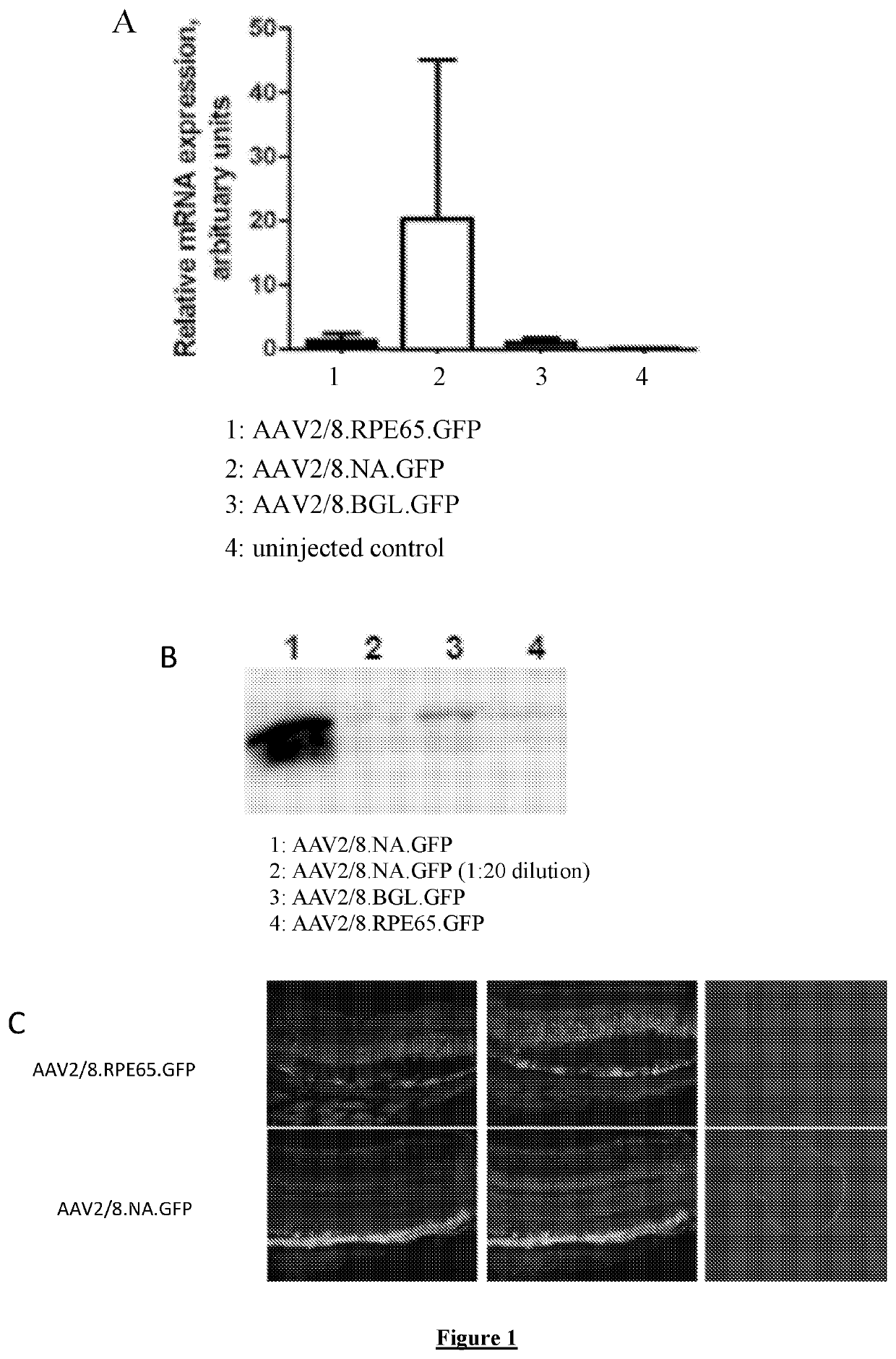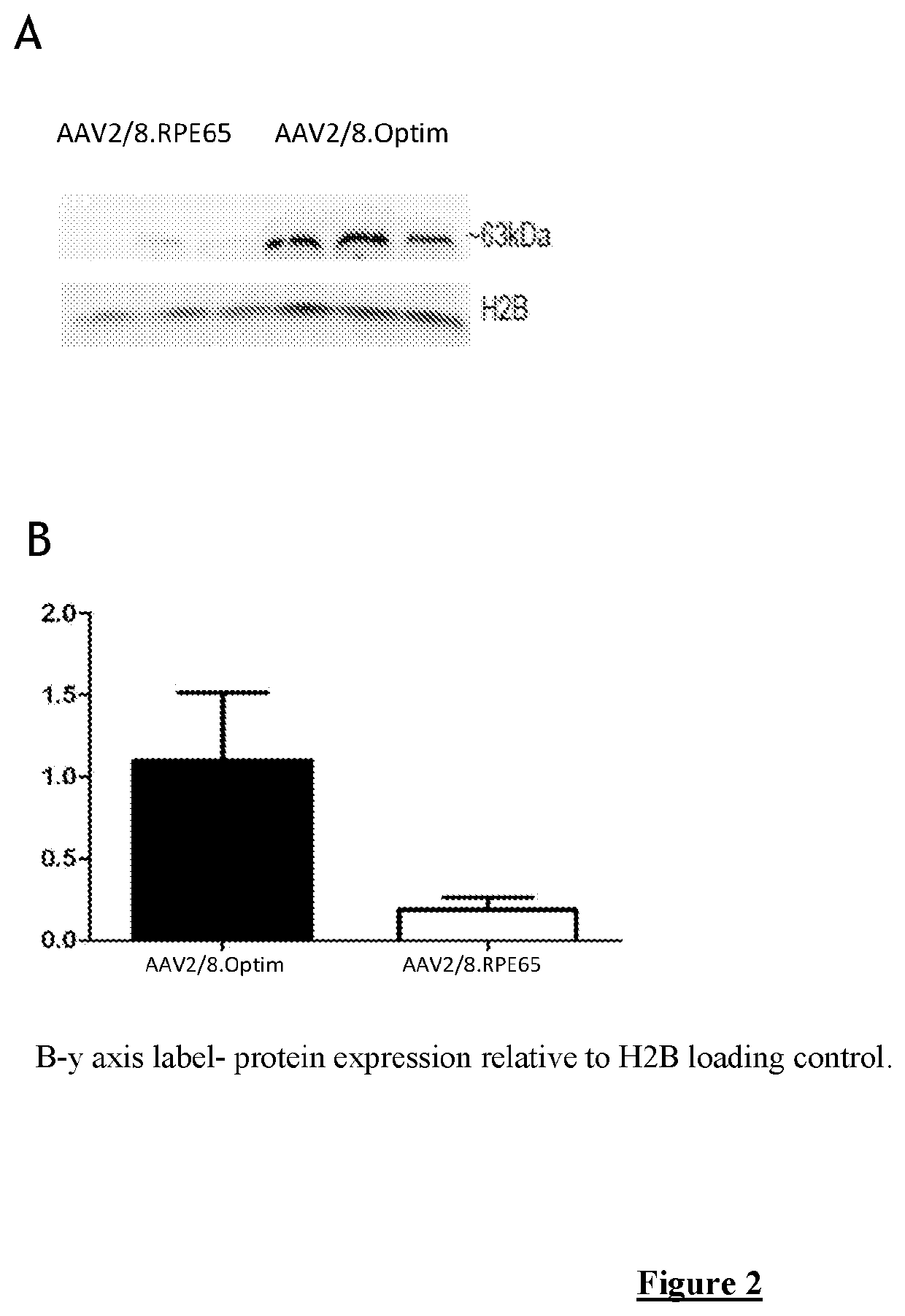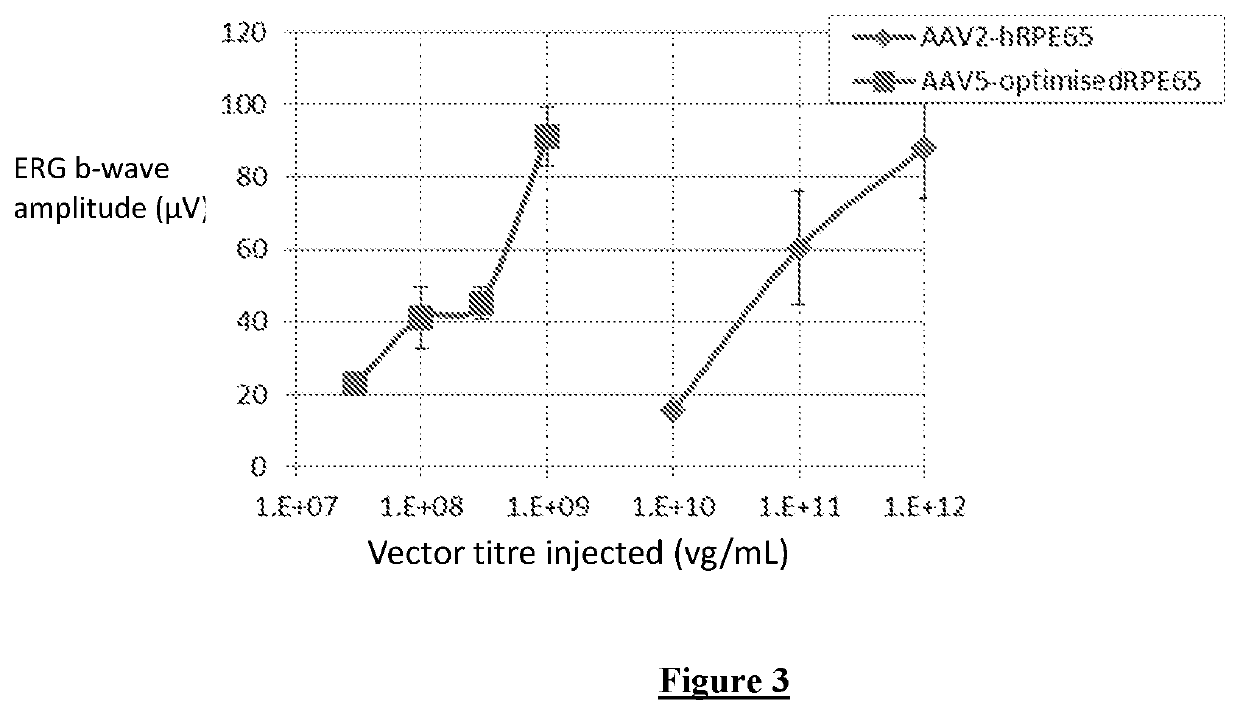Optimized RPE65 promoter and coding sequences
a coding sequence and promoter technology, applied in the direction of genetic material ingredients, cardiovascular disorders, drug compositions, etc., can solve the problems of reduced photoreceptor function and their subsequent loss, disruption of visual cycle, absence of rod function, etc., and achieve the effect of stringent driving expression
- Summary
- Abstract
- Description
- Claims
- Application Information
AI Technical Summary
Benefits of technology
Problems solved by technology
Method used
Image
Examples
example 1
ion of the Promoter Driving RPE Expression
As described in the “Plasmid Constructs” section above the ‘full length’ RPE65 promoter was digested with the NsiI and AccI restriction enzymes to create the “NA” RPE65 promoter fragment. This fragment is shown in SEQ ID NO:2. The ‘full length’ RPE65 promoter was also digested with the BglII restriction enzyme to create the “Bgl” promoter fragment. These promoter configurations (fragments of genomic DNA around the RPE65 transcription start site) were tested along side the ‘full-length’ promoter to determine the relative expression levels and the tissue specificity of expression. Assessments were done with the promoters driving GFP expression to facilitate localisation of transgene expression (FIG. 1). FIG. 1A shows Real-Time PCR analysis of GFP mRNA expression in RPE-choroid extracts, from AAV2 / 8 vectors harbouring the full-length RPE65 promoter “RPE65”, or the “NA” or “Bgl” fragments. The “NA” fragment of the RPE65 promoter was effective wi...
example 2
ion of the RPE65 cDNA
In order to attempt to improve the efficacy of post-transcriptional processing of the human RPE65 mRNA (RNA stability, nuclear export and translation) a number of modifications to the coding sequence of the RPE65 cDNA were made. This resulted in the sequence shown in SEQ ID NO:4. The Kozak sequence was optimised to “CCACCATG”, see nucleotides 1 to 8 of SEQ ID NO:4, to attempt to achieve better recognition of the start codon and consequently more efficient translation. The natural Kozak sequence of the human RPE65 gene differed considerably from the obtained optimal consensus sequence.
In addition, the coding sequence of RPE65 was subjected to codon optimisation, to attempt to improve the codon usage bias and CG content, and remove any cryptic processing sites and potential stem-loop structures in the mRNA. During optimisation of the RPE65 coding sequence 7 rare codons (including a pair in tandem), a cryptic splice site, 4 cryptic premature polyadenylation sites a...
example 3
ssessment of Treatment Efficacy
A construct consisting of the promoter that resulted in the highest level of expression, the “NA” fragment shown in SEQ ID NO:2, and the optimised RPE65 coding sequence shown in SEQ ID NO:4, was packaged in AAV5 and AAV8 capsids and tested for its ability to rescue retinal function in vivo in RPE65-deficient mice. Efficacy of rescue was compared against the clinical grade vector previously used in Bainbridge et al (2008), “AAV2-hRPE65”. This vector contained the human RPE65 coding sequence driven by a 1400-bp fragment of the human RPE65 promoter. As the previous vector already led to rescue in animals, lower vector doses were administered to allow comparison of treatment efficacy under limiting circumstances (FIG. 3). b-wave amplitude was used as a measure of rescue. Surprisingly, the b-wave amplitudes from the eyes treated with the optimised vector were as high as or higher than amplitudes from eyes injected with a 300-fold higher dose of the original...
PUM
| Property | Measurement | Unit |
|---|---|---|
| volume | aaaaa | aaaaa |
| pH | aaaaa | aaaaa |
| volume | aaaaa | aaaaa |
Abstract
Description
Claims
Application Information
 Login to View More
Login to View More - R&D
- Intellectual Property
- Life Sciences
- Materials
- Tech Scout
- Unparalleled Data Quality
- Higher Quality Content
- 60% Fewer Hallucinations
Browse by: Latest US Patents, China's latest patents, Technical Efficacy Thesaurus, Application Domain, Technology Topic, Popular Technical Reports.
© 2025 PatSnap. All rights reserved.Legal|Privacy policy|Modern Slavery Act Transparency Statement|Sitemap|About US| Contact US: help@patsnap.com



